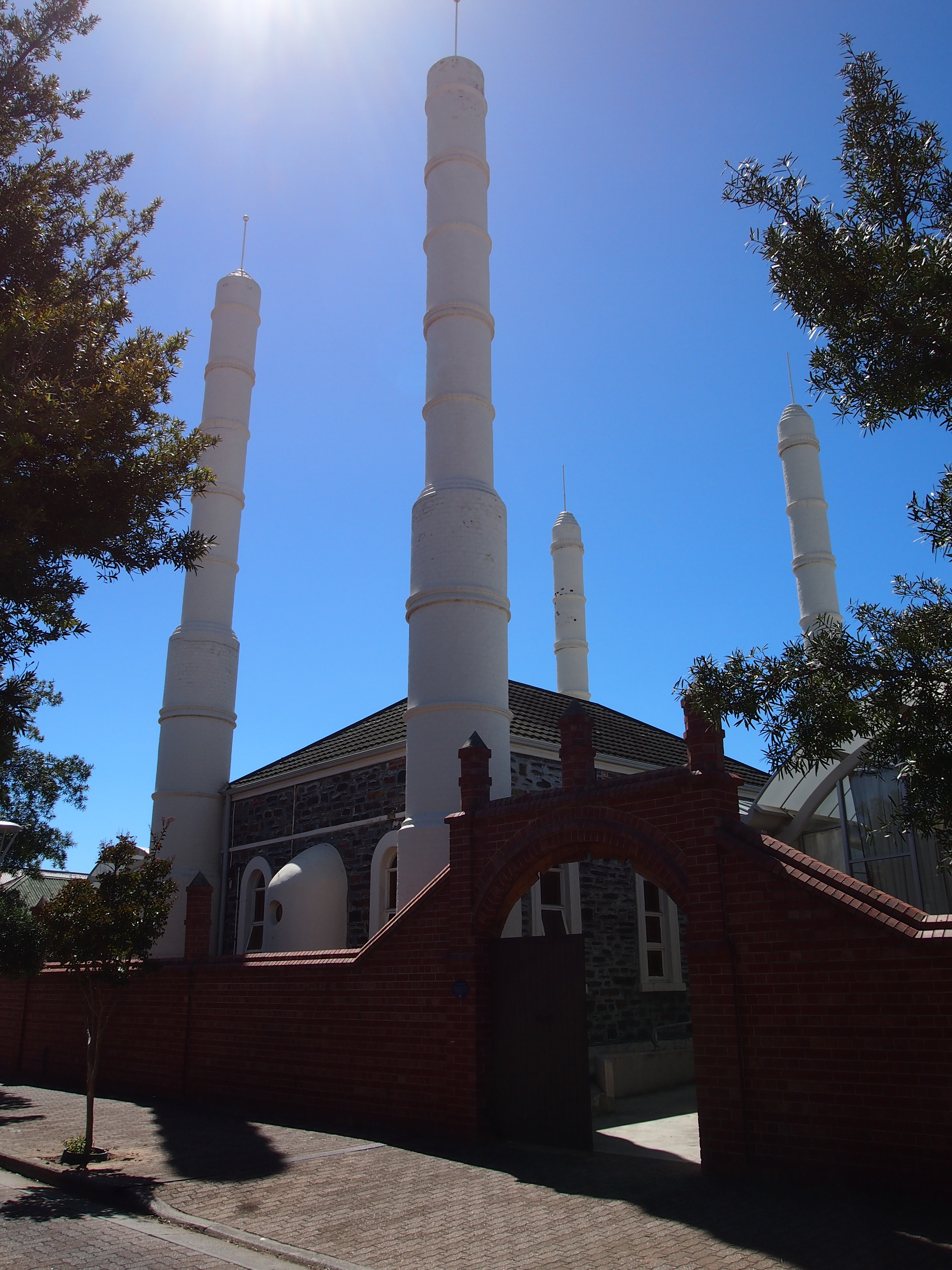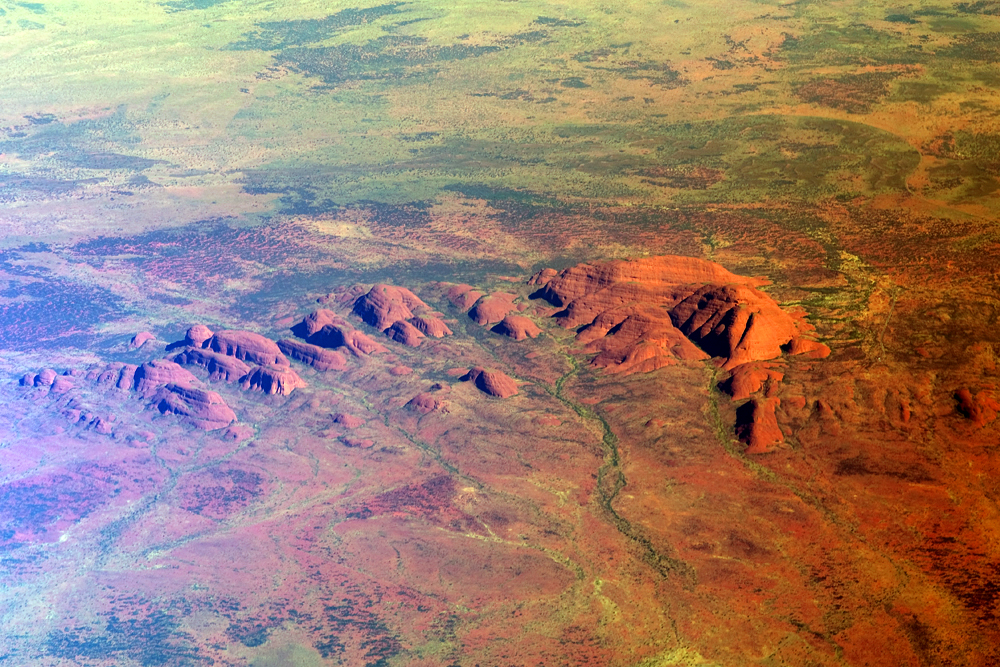|
Lasseter's Reef
Lasseter's Reef refers to the purported discovery, announced by Harold Bell Lasseter in 1929 and 1930, of a fabulously rich gold deposit in a remote and desolate corner of central Australia. Lasseter's accounts of the find are conflicting and its precise location remains a mystery—if it exists. Discovery In 1929 and again in 1930 Harold Bell Lasseter (1880–1931) made different (and possibly conflicting) claims that either in 1911 or in 1897, he had discovered a rich gold deposit. On 14 October 1929 he wrote a letter to Kalgoorlie federal member, Albert Green, claiming to have discovered "a vast gold bearing reef in Central Australia" 18 years earlier and that it was located at the western edge of the MacDonnell Ranges. He made a similar claim to other officials and was interviewed by a commissioner and a geologist, however the government took no action to investigate the claim. It was revealed that from 1908 to 1913 Lasseter lived on a lease-hold farm near Tabulam. In March ... [...More Info...] [...Related Items...] OR: [Wikipedia] [Google] [Baidu] |
Lewis Harold Bell Lasseter
Lewis Harold Bell Lasseter (27 September 1880 - 31 January 1931), also known as Harold Lasseter, was an Australian gold prospector who claimed to have found a fabulously rich gold reef in central Australia. Life Lasseter was born in 1880 at Bamganie, Victoria, Australia. Self-educated, he was literate and well-spoken, and commonly described as eccentric and opinionated. He travelled in both Australia and the United States and worked at a variety of occupations, marrying twice and fathering five children. Lasseter twice enlisted in the First Australian Imperial Force. In 1916, he joined the reinforcements for the 3rd Pioneer Battalion being raised in Melbourne, but was discharged before leaving Australia after repeatedly going AWOL. In 1917, he enlisted again, this time in Adelaide, but was discharged as medically unfit for service following a brawl, again without leaving Australia. Lasseter's Reef Lasseter was made famous by his sensational claim, first asserted in 1929, th ... [...More Info...] [...Related Items...] OR: [Wikipedia] [Google] [Baidu] |
Afghan (Australia)
Afghan cameleers in Australia, also known as "Afghans" ( ps, افغانان) or "Ghans" ( ps, غانز), were camel drivers who worked in Outback Australia from the 1860s to the 1930s. Small groups of cameleers were shipped in and out of Australia at three-year intervals, to service the Australian inland pastoral industry by carting goods and transporting wool bales by camel trains. They were commonly referred to as "Afghans", even though a lot of them originated from the far western parts of British India, primarily Balochistan and the NWFP (now Pakistan), which was inhabited by ethnic Pashtuns and Balochs. Nonetheless, many were from Afghanistan itself as well. In addition, there were also some with origins in Egypt and Turkey.Afghan cameleers in Australia 3rd September 2009. Australia.gov. ... [...More Info...] [...Related Items...] OR: [Wikipedia] [Google] [Baidu] |
Lost Mines
Lost mines are a popular form of lost treasure legend. The mines involved usually contain a high-value commodity such as gold, silver or diamonds. Often, there is a map (sometimes called a "waybill") purportedly showing the location of the mine. Common reasons for the mines being lost include: * The mine was discovered and worked by a recluse who refuses to divulge the location, and dies without revealing the location. * The mine was worked by native peoples who refuse to divulge the location to others. * The mineral deposit was discovered in a remote location, and upon returning to the area the discoverer could not find it again. * The discoverer died of hunger, thirst, or exposure shortly after discovering the deposit, and his body is found with rich ore specimens in his possession. * The discoverers were killed by hostile natives. Sometimes the natives cover up the entrance to the mine. * In Spanish Empire colonies in the New World, many lost mines were supposedly worked u ... [...More Info...] [...Related Items...] OR: [Wikipedia] [Google] [Baidu] |
Uluru
Uluru (; pjt, Uluṟu ), also known as Ayers Rock ( ) and officially Gazette#Gazette as a verb, gazetted as UluruAyers Rock, is a large sandstone geological formation, formation in the centre of Australia. It is in the southern part of the Northern Territory, southwest of Alice Springs. Uluru is sacred to the Pitjantjatjara, the Aboriginal Australians, Aboriginal people of the area, known as the Anangu, Aṉangu. The area around the formation is home to an abundance of springs, depression (geology), waterholes, rock caves, and cave painting, ancient paintings. Uluru is listed as a UNESCO World Heritage Site. Uluru and Kata Tjuta, also known as the Olgas, are the two major features of the Uluṟu-Kata Tjuṯa National Park. Uluru is one of Australia's most recognisable natural landmarks and has been a popular destination for tourists since the late 1930s. It is also one of the most important indigenous sites in Australia. Name The local Anangu, Aṉangu, the Pitjantjatjara ... [...More Info...] [...Related Items...] OR: [Wikipedia] [Google] [Baidu] |
Aboriginal Australians
Aboriginal Australians are the various Indigenous peoples of the Australian mainland and many of its islands, such as Tasmania, Fraser Island, Hinchinbrook Island, the Tiwi Islands, and Groote Eylandt, but excluding the Torres Strait Islands. The term Indigenous Australians refers to Aboriginal Australians and Torres Strait Islanders collectively. It is generally used when both groups are included in the topic being addressed. Torres Strait Islanders are ethnically and culturally distinct, despite extensive cultural exchange with some of the Aboriginal groups. The Torres Strait Islands are mostly part of Queensland but have a separate governmental status. Aboriginal Australians comprise many distinct peoples who have developed across Australia for over 50,000 years. These peoples have a broadly shared, though complex, genetic history, but only in the last 200 years have they been defined and started to self-identify as a single group. Australian Aboriginal identity has cha ... [...More Info...] [...Related Items...] OR: [Wikipedia] [Google] [Baidu] |
Tjunti
Tjunti is a soakage site near Kaḻṯukatjara, in the Northern Territory of Australia. It is located where the Hull River cuts through the Petermann Ranges, about to the southeast of Kaḻṯukatjara, by road along the Tjukaruru Road. Tjunti is known as the site where the famous gold prospector Harold B. Lasseter took refuge on his fatal search for Lasseter's Reef. An outstation was established here in 1977, and belongs to a Pitjantjatjara family. The gap in the mountains is formed here by the Hull River, a sandy creek that remains dry for most of the year. It splits the Curdie Range in the south from the Mannanana Range in the north. There are several soaks and rockholes in the area. Lasseter's Cave The small cave where Lasseter took refuge is (commonly called Lasseter's Cave in English). This is an opening in a rock formation in the Mannanana Range. Lasseter took shelter here for about 25 days during January 1931, when trying to find a rich gold deposit that ... [...More Info...] [...Related Items...] OR: [Wikipedia] [Google] [Baidu] |
Kata Tjuṯa
Kata Tjuṯa / The Olgas (Pitjantjatjara: , lit. 'many heads'; ) is a group of large, domed rock formations or bornhardts located about southwest of Alice Springs, in the southern part of the Northern Territory, central Australia. Uluṟu / Ayers Rock, located to the east, and Kata Tjuṯa / The Olgas form the two major landmarks within the Uluṟu-Kata Tjuṯa National Park. The park is considered sacred to the Aboriginal people of Australia. The 36 domes that make up Kata Tjuṯa / Mount Olga cover an area of are composed of conglomerate, a sedimentary rock consisting of cobbles and boulders of varying rock types including granite and basalt, cemented by a matrix of coarse sandstone. The highest dome, Mount Olga, is above sea level, or approximately above the surrounding plain higher than Uluṟu). [...More Info...] [...Related Items...] OR: [Wikipedia] [Google] [Baidu] |
Charlatan
A charlatan (also called a swindler or mountebank) is a person practicing quackery or a similar confidence trick in order to obtain money, power, fame, or other advantages through false pretenses, pretense or deception. Synonyms for ''charlatan'' include ''shyster'', ''quack'', or ''faker''. ''Quack'' is a reference to ''quackery'' or the practice of dubious medicine, including the sale of snake oil, or a person who does not have medical training who purports to provide medical services. Etymology The word comes from French '','' a seller of medicines who might advertise his presence with music and an outdoor stage show. The best known of the Parisian charlatans was Tabarin, whose skits and farces were influenced by ''commedia dell'arte'' inspired Molière. The word can also be traced to Spanish ', an indiscreetly talkative person, a ''chatterbox''. Ultimately, etymologists trace ''charlatan'' from either the Italian ', to chatter or prattle; or from ''Cerretano'', a resident of ... [...More Info...] [...Related Items...] OR: [Wikipedia] [Google] [Baidu] |
Mount Leisler
Mount Leisler is the highest point in the Kintore Range in the south-west of the Northern Territory of Australia. Its elevation is . Location and features Mount Leisler was named by William Tietkens on 27 May 1889. Tietkens was in command of the "Central Australian Exploring Expedition" 1889 under the auspices of the Royal Geographical Society of Australasia, South Australian Branch. He named Kintore Range in honour of Lord Kintore, governor of South Australia, and Mount Leisler in honour of Mr Louis Leisler of Glasgow who had provided funds for Tietkens to open up land between Fowlers Bay, South Australia and the Musgrave Ranges. Tietkens measured the height of the mountain at above the surrounding plain. Tietkens blazed a tree at the base of the mountain with the letter T, below which were the numbers 5.89. This tree was re-discovered by Len Beadell in 1960 while building the Sandy Blight Junction Road, and some branches were still bearing foliage. The tree has since died ... [...More Info...] [...Related Items...] OR: [Wikipedia] [Google] [Baidu] |
National Library Of Australia
The National Library of Australia (NLA), formerly the Commonwealth National Library and Commonwealth Parliament Library, is the largest reference library in Australia, responsible under the terms of the ''National Library Act 1960'' for "maintaining and developing a national collection of library material, including a comprehensive collection of library material relating to Australia and the Australians, Australian people", thus functioning as a national library. It is located in Parkes, Australian Capital Territory, Parkes, Canberra, Australian Capital Territory, ACT. Created in 1960 by the ''National Library Act'', by the end of June 2019 its collection contained 7,717,579 items, with its manuscript material occupying of shelf space. The NLA also hosts and manages the renowned Trove cultural heritage discovery service, which includes access to the Australian Web Archive and National edeposit (NED), a large collection of digitisation, digitised newspapers, official documents, ... [...More Info...] [...Related Items...] OR: [Wikipedia] [Google] [Baidu] |
Government Of Northern Territory
The Government of the Northern Territory of Australia, also referred to as the Northern Territory Government, is the Australian territorial democratic administrative authority of the Northern Territory. The Government of Northern Territory was formed in 1978 with the granting of self-government to the Territory. The Northern Territory is a territory of the Commonwealth of Australia, and the Constitution of Australia and Commonwealth law regulates its relationship with the Commonwealth. Under the Australian Constitution, the Commonwealth has full legislative power, if it chooses to exercise it, over the Northern Territory, and has devolved self-government to the Territory. The Northern Territory legislature does not have the legislative independence of the Australian states but has power in all matters not in conflict with the Constitution and applicable Commonwealth laws, but subject to a Commonwealth veto. Since 13 May 2022, the head of government has been Chief Minister Nat ... [...More Info...] [...Related Items...] OR: [Wikipedia] [Google] [Baidu] |
Lake Mackay
Lake Mackay, known as Wilkinkarra to the Indigenous Pintupi people, is the largest of hundreds of ephemeral salt lakes scattered throughout the Pilbara and northern parts of the Goldfields-Esperance region of Western Australia and the Northern Territory. It is located within the Great Sandy Desert. The lake is the largest in Western Australia and has a surface area of . Its elevation ranges between and above mean sea-level. Description Lake Mackay is the fourth largest lake in Australia. It measures approximately east-west and north-south. The darker areas of the lakebed are indicative of some form of desert vegetation or algae, some moisture within the soils of the dry lake, and the lowest elevations where pooling of water occurs. In this arid environment, salts and other minerals are carried to the surface through capillary action caused by evaporation, thereby producing the white reflective surface. Visible are various brown hills scattered across the eastern half of th ... [...More Info...] [...Related Items...] OR: [Wikipedia] [Google] [Baidu] |








